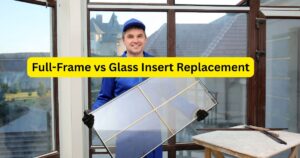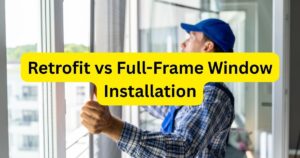If you’ve been putting off replacing your windows because you’re unsure about the method, you’re not alone. Brick-to-brick vs retrofit window installation is a common dilemma for homeowners dealing with outdated or inefficient windows.
Brick-to-brick means replacing the entire window system, including the frame and trim — ideal for homes with structural issues or major renovations. Retrofit, however, keeps the original frame intact, only replacing the window itself. It’s faster, cheaper, and works best when the frame is solid.
In this article, we’ll compare both options based on installation time, durability, and long-term benefits, helping you choose the best fit for your home and budget.
Brick-to-Brick vs Retrofit Window Installation: Quick Comparison
If you’re deciding between brick-to-brick vs retrofit window installation, here’s a brief breakdown of the key differences:
| Brick-to-Brick Installation | Retrofit Installation |
| Entire frame, trim, and window replaced | Only the window is replaced, frame remains intact |
| Best for damaged or aging frames, major home renovations | Ideal for solid frames and simple upgrades |
| Longer installation time | Faster installation |
| Higher disruption (requires more work and prep) | Minimal disruption (quicker, no major construction) |
| Higher cost (labor, materials, full replacement) | Lower cost (more affordable and quicker) |
| Better insulation and energy efficiency | Good efficiency if frame is in great condition |
| Fully customizable, new trim, and seamless fit | Slightly smaller glass area, keeps existing trim |
| Stronger impact on resale value (full system upgrade) | Adds value but less than full-frame |
| Ideal for major renovations, older homes, or energy performance | Quick fix for functional windows, budget-friendly upgrade |
What is Brick-to-Brick Window Installation?
Brick-to-brick window installation involves the full replacement of the window, frame, and trim, removing everything down to the studs or brick.
It’s an ideal choice for homes with structural damage, or aging frames, or when you’re doing major renovations. This method allows for a fresh start, ensuring a tight seal and improved energy performance.
Since everything is replaced, it’s fully customizable to suit your design needs. It’s the best option for homeowners looking for durability, efficiency, and a complete upgrade to both appearance and performance.
What is Retrofit Window Installation?
Retrofit window installation replaces the window while keeping the original frame in place.
It’s a perfect solution for homes where the frame is still in good condition or when you’re looking for a quick, affordable way to upgrade. This method is less invasive, with a faster installation process, and causes minimal disruption to your daily life.
Retrofit is a cost-effective choice for improving your home’s energy efficiency or updating the look of your windows without the expense or time commitment of a full-frame replacement.
Key Comparison between Brick-to-Brick vs Retrofit Window Installation
When deciding between brick-to-brick vs retrofit window installation, it’s essential to understand how each method meets different needs. Here are some key differences between these two installation methods:
Long-Term Durability and Maintenance
Brick-to-brick installation sets you up for long-term reliability because you’re replacing everything — the frame, trim, and window — so there’s less chance of future issues like drafts or leaks. It’s a more solid, lasting option for homes that need structural attention.
On the other hand, Retrofit windows are a quicker fix and more cost-effective, but since they rely on the existing frame, they might require more maintenance in the future, especially if that frame is aging.
Ability to Adapt to Future Changes
When you choose Brick-to-Brick, you’re not just stuck with the same window setup. It allows you the flexibility to change window sizes or shapes down the line. You can completely reframe the window opening if your needs change.
In contrast, retrofit, however, locks you into the existing frame and size. If you ever want to alter the size or shape, you’ll need a full-frame installation, making it less adaptable for future updates.
Weather Resistance
Brick-to-brick windows tend to offer better protection against harsh weather conditions. Since everything is completely sealed and insulated, they prevent air leaks more effectively, which is key in extreme climates.
In comparison, Retrofit windows may not always seal as tightly as full-frame installs, especially in older homes with worn-out frames.
If you’re living in a place with harsh winters or frequent storms, brick-to-brick is likely your best bet for long-term weather resistance.
Noise Reduction and Soundproofing
Brick-to-brick windows provide superior soundproofing because the entire frame is being replaced and resealed.
The added layers of insulation improve the window’s ability to block external noise. Retrofit windows, while still effective for noise reduction, often don’t offer the same level of soundproofing.
Since you’re using the existing frame, any gaps or issues with the frame can allow noise to seep through, making brick-to-brick the better option for quieter living spaces.
Customization for Specific Needs
If you’re looking for complete control over the look and feel of your windows, brick-to-brick is the way to go.
This method lets you choose from a variety of materials, trims, and sizes to match your home’s aesthetic. You can even adjust the size and shape of the window opening.
Retrofit, in contrast, is more limited to standard sizes and materials because it uses the original frame. If you want to experiment with different materials or customize the design, Brick-to-Brick provides much more flexibility.
Impact on Home Insulation Beyond Windows
Brick-to-Brickbrick replacement does more than just upgrade the windows — it improves the overall insulation of your home.
By resealing the window opening and adding new insulation around the frame, you’re likely to see better overall energy performance.
Retrofit windows may help improve energy efficiency at the window level, but they don’t address the wall cavity or insulation around the frame.
If your walls aren’t well-insulated, retrofit won’t offer the same energy benefits as a full-frame install.
Flexibility in Window Type and Materials
Choosing brick-to-brick gives you the option to select from a wider range of window materials and styles, like vinyl, wood, or fiberglass, to better suit your needs. You can customize everything from the window frame to the glass type.
Retrofit windows typically work within the constraints of the existing frame, meaning you’re limited to the materials already in place. If you’re looking for a specific material or finish, brick-to-brick offers more flexibility.
Environmental Impact
While brick-to-brick windows might use more materials upfront, they tend to be more energy-efficient over time, reducing your home’s overall energy consumption and carbon footprint.
By replacing the entire system, you ensure everything is sealed tightly and well-insulated.
Retrofit, while quick and cost-effective, may not be as eco-friendly if the frame is old or poorly insulated. It’s a good solution for minor upgrades, but if you’re aiming for sustainability and efficiency in the long run, brick-to-brick wins.
Installation Time
Brick-to-brick window installation takes longer because it involves a complete teardown of the existing window system and full reconstruction.
You’re looking at more than 5 days, depending on the number of windows and the complexity of the project. The process includes demolition, re-framing, insulation, and finishing work, which can take time but ensures quality.
Retrofit, on the other hand, is much quicker, typically taking 1–2 days for an average home. Since you’re only replacing the window and not the entire frame, the job is simpler and faster with minimal disruption.
It’s the ideal choice if you’re short on time but want an upgrade.
Resale Value
Brick-to-brick is likely to increase your home’s resale value more than retrofitting.
Potential buyers are often more impressed by a complete window replacement, especially if it improves energy efficiency, insulation, and the home’s overall curb appeal.
Retrofit, while still an upgrade, doesn’t carry the same perceived value. If the existing frame is old, it may raise concerns for buyers or inspectors, even though it still adds value.
If you’re planning to sell your home soon, full-frame will likely give you the biggest return.
When to Choose Brick-to-Brick Window Installation
If your window frames are damaged or you’re looking for a more thorough upgrade, brick-to-brick installation is likely the better option.
- Damaged or Deteriorating Frames: If your window frames are rotted, warped, or severely damaged, full-frame replacement is necessary to address the underlying issues.
- Maximum Energy Efficiency: Full-frame installs provide a better seal, insulation, and overall energy performance, especially for homes with old or inefficient windows.
- Major Home Renovations: If you’re remodeling the exterior or doing other major renovations, brick-to-brick ensures that the windows integrate seamlessly with the new look.
- Increasing Home Value: Full-frame installations boost curb appeal and are more likely to increase your home’s resale value.
Ideal for: Homes with older windows, structural issues, or major renovations requiring a full window system overhaul.
When to Choose Retrofit Window Installation
If your window frames are in good shape and you want a quick, budget-friendly upgrade, retrofit installation is a solid option.
- Frames Are Still Solid: Retrofit is ideal when the existing frames are undamaged, square, and functioning well — there’s no need to replace them if they’re structurally sound.
- Looking for a Simple Upgrade: If you only need to replace the glass for improved insulation or energy efficiency without disturbing the rest of the window system, retrofit is the way to go.
- Budget-Friendly Option: Retrofit is more cost-effective compared to full-frame, saving you money while still providing noticeable improvements in energy efficiency and comfort.
Perfect for: Homes with solid frames that just need a glass upgrade or quick aesthetic improvements without a full tear-out.
Conclusion
In conclusion, choosing between brick-to-brick vs retrofit window installation depends on your home’s condition and your goals.
If you’re dealing with structural damage, major renovations, or seeking long-term energy efficiency, brick-to-brick installation is the way to go.
However, if your frames are solid and you need a quicker, budget-friendly solution, retrofit installation offers a fast and cost-effective upgrade.
Ultimately, consider the condition of your frames, your budget, and the level of disruption you’re willing to tolerate.



